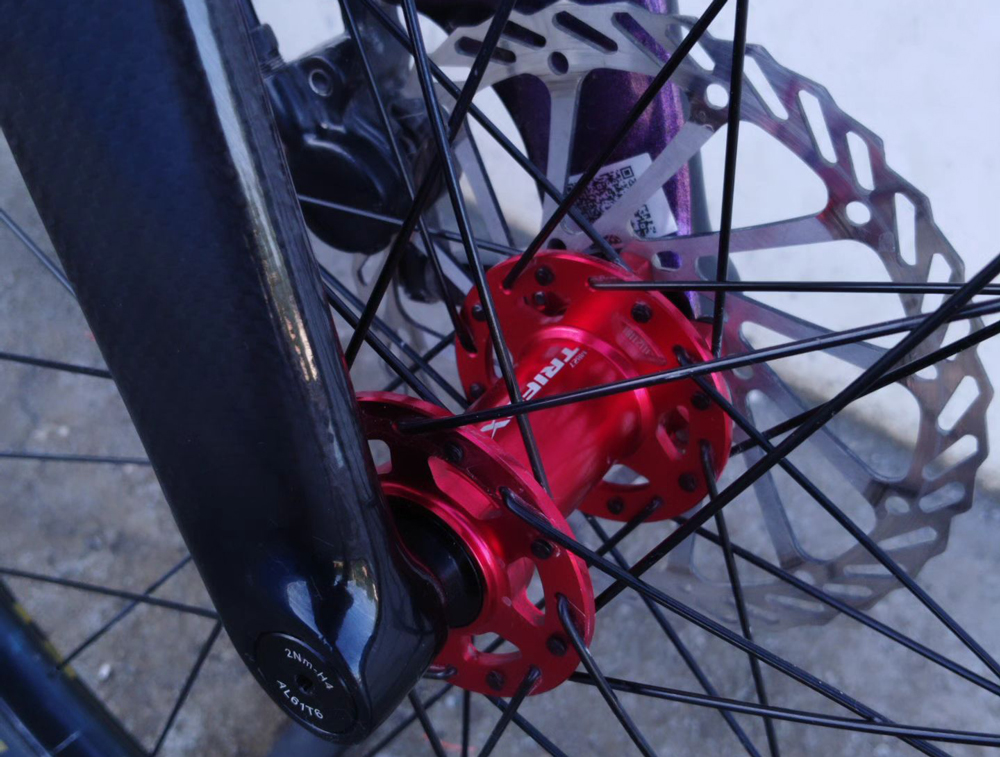
Bike hubs are the unsung heroes of your wheelset, influencing performance, durability, and ride quality. Whether you’re upgrading or building a bike, understanding the three primary hub types ensures you pick the right one for your needs. 1. Freewheel Hubs Common on older or budget bikes, freewheel hubs feature a threaded mechanism where the gear cluster (freewheel) screws directly onto the hub. Pros: Simple design, affordable. Cons: Less durable under heavy load; replacing gears requires removing the entire freewheel. Ideal for casual riders or vintage builds but less common in modern cycling. 2. Freehub (Cassette Hubs) The modern standard for most road, gravel, and mountain bikes. Freehubs have a splined body where the cassette slides on, with bearings housed within the hub. Pros: Stronger, easier maintenance, and compatible with a wide range of cassettes. Cons: Slightly pricier. This design dominates high-performance bikes due to its reliability and ease of upgrades. 3. Fixed Gear Hubs Used in track bikes or “fixies,” these hubs lack a freewheel mechanism, meaning the pedals move whenever the bike is in motion. Pros: Direct power transfer, lightweight, and low maintenance. Cons: No coasting—requires constant pedaling. Popular among urban riders and velodrome racers seeking simplicity and control. Choosing Your Hub Your riding style dictates the best fit: - Freewheel: Budget-friendly, low-maintenance commuting. - Freehub: Versatile performance for most disciplines. - Fixed Gear: Minimalist urban or track use. Upgrade your ride with precision-engineered hubs from Trifox Bike, offering durability and smooth engagement across all types. Whether chasing speed or mastering city streets, the right hub transforms your bike's potential.
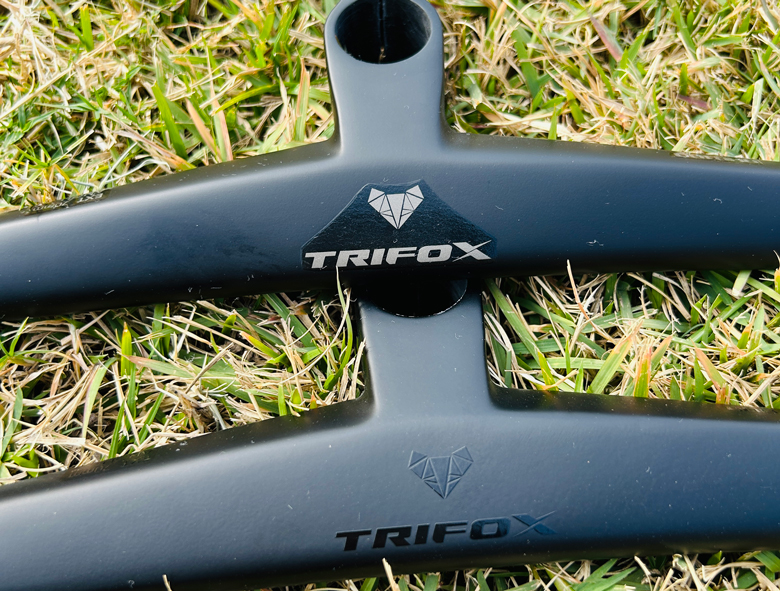
Cyclists, rejoice! Carbon fiber handlebars have long been the gold standard for riders seeking lightweight performance and vibration-damping comfort. But their steep price tags often put them out of reach for budget-conscious enthusiasts—until now. Trifox Bike just dropped a bombshell: their premium RHB200 Carbon Integrated Handlebar is on sale for just $50(originally $109). Carbon Fiber's Edge: Lightweight, Strong, and Comfortable Carbon fiber dominates high-end cycling components for good reason: 1. Weight Savings: At 240 grams (400mm width), the RHB200 is 35% lighter than most aluminum bars. Less weight at the front end means quicker steering and easier climbs. 2. Strength and Stiffness: Despite its featherlight feel, the RHB200’s unidirectional carbon layup delivers exceptional stiffness for efficient power transfer during sprints. 3. Vibration Damping: Carbon’s natural flex absorbs road chatter, reducing hand fatigue on long rides—a godsend for gravel and rough-road riders. Trifox RHB200: Designed to Impress This isn't a stripped-down budget model. The RHB200 packs features seen in bars costing triple its price: 1. Aero Integrated Design: A sleek, one-piece shape cuts through wind resistance and simplifies cockpit setup (no separate stem needed). 2. Comfort-First Geometry: A 6-degree rise and 70mm reach offer a balanced, neutral wrist position for all-day comfort. 3. Hidden Cable Routing: Internal grooves keep brake/shifter cables tidy, boosting aesthetics and aerodynamics. 4. Wide Compatibility: Works with road, gravel, and hybrid bikes—ideal for riders upgrading from bulky stock bars. Why $50 Is Unbeatable Carbon handlebars under $100 are rare, and most budget options cut corners on materials or safety. The RHB200, however, meets rigorous ISO standards and uses the same high-modulus carbon as Trifox’s pro-level gear. So, how did they slash the price? - Direct-to-Consumer Model: Trifox skips middlemen, passing savings to riders. - Overstock Clearance: A seasonal surplus means you score top-tier tech at entry-level prices. Who Should Grab This Deal? - Road Cyclists: Shave grams and reduce fatigue on century rides. - Gravel Adventurers: Dampen vibrations from washboard trails. - Commuters: Upgrade to a sleek, durable bar that handles potholes with ease. - DIY Builders: Add premium flair to custom bikes without blowing your budget. But Hurry—This Price Won't Last At $50, the RHB200 is a no-brainer for anyone craving carbon’s benefits without the premium cost. Pair it with affordable carbon seatposts or wheels (also on sale at Trifox Bike) to build a high-performance rig on a dime. Pro Tip: Measure your current handlebar width and stem length before ordering. The RHB200 comes in 400mm and 420mm widths, with a 70mm stem—trim the bars if you prefer a narrower stance. The Trifox RHB200 redefines value in the carbon component market. Whether you’re chasing KOMs or just want a smoother commute, this handlebar delivers pro-level engineering at a laughably low price. Don't miss your chance to upgrade—head to Trifox Bike and grab one before stock runs out!
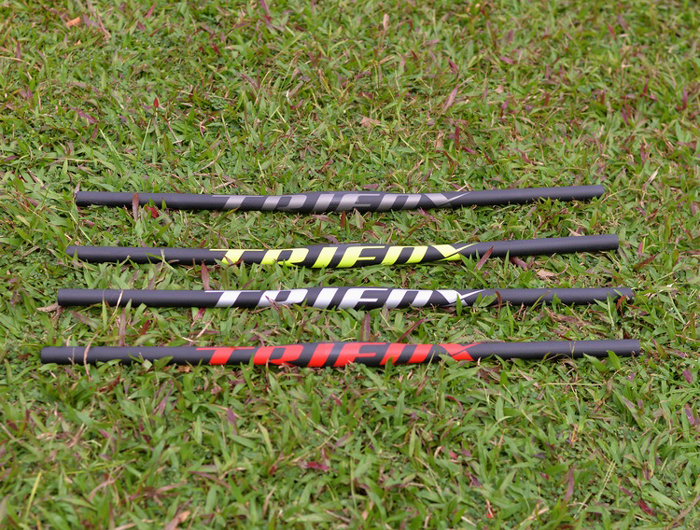
Flat handlebars are a favorite for urban commuters and mountain bikers alike, offering precise control and a responsive ride. However, long hours in the saddle can lead to wrist, hand, or shoulder discomfort if your setup isn’t dialed in. Here’s how to boost comfort without sacrificing performance. 1. Invest in Ergonomic Grips Standard grips often lack contouring, causing pressure points. Ergonomic options, like those with flared palm support or variable density, distribute pressure evenly. Look for lock-on designs (e.g., silicone or rubber) to prevent slippage and reduce vibrations. 2. Adjust Handlebar Position Small tweaks to roll and angle can make a big difference. Rotate the bars slightly up or down to align your wrists neutrally. Many riders prefer a 9-degree backsweep (like the Trifox FHB100) to reduce wrist strain. Experiment to find your sweet spot. 3. Add Cushioning Padded grips or handlebar tape absorb trail chatter. For minimalist setups, dual-density grips offer a soft outer layer with a firm core. Wrap thicker tape (e.g., gel-infused) if you prioritize shock absorption. 4. Install Bar Ends Bar ends extend your grip area, letting you shift hand positions during long rides. They’re ideal for climbing or stretching out cramped fingers. Opt for lightweight aluminum or composite models to avoid adding bulk. 5. Upgrade to Carbon Fiber Carbon handlebars, like the Trifox FHB100, dampen vibrations better than aluminum, reducing fatigue on rough terrain. The FHB100’s 9-degree sweep and 720mm width (trimmable) balance comfort and control, while its high-modulus carbon construction ensures durability without excess weight. 6. Fine-Tune Stem Length A stem that's too long strains your shoulders; too short feels twitchy. Swap stems to adjust reach—shorter stems (50–70mm) suit upright riding, while longer ones (80–100mm) enhance stability at speed. 7. Check Your Posture Flat bars encourage a forward lean, but overdoing it stresses your upper body. Ensure your saddle position supports a neutral spine, and consider a riser stem if you need a more upright stance. 8. Maintain Your Setup Regularly inspect handlebar bolts, grips, and accessories for wear. Loose components can compromise control and comfort. Comfort on flat handlebars hinges on personalized adjustments and smart upgrades. For riders seeking a vibration-damping, lightweight solution, the Trifox FHB100 Carbon Flat Bar delivers ergonomic design and rugged performance. Pair it with ergonomic grips and strategic positioning, and you’ll transform your ride from fatiguing to fantastic.

As mountain biking technology evolves, riders demand forks that balance lightweight agility with unshakable stiffness and control. Enter the Trifox TMK200 29er Carbon Rigid Fork—a standout contender for 2025's top Boost-compatible forks. Designed for riders who prioritize precision and durability, this fork redefines performance on rugged trails. Here’s why it’s a must-have upgrade for your MTB setup. 1. Boost Spacing: The Stiffness Revolution The TMK200 embraces 148x12mm Boost hub spacing, a standard that’s become non-negotiable for modern MTBs. By widening the hub flange distance, Boost spacing increases wheel stiffness, reducing flex during hard cornering or high-load descents. This translates to sharper steering response and better power transfer, especially on technical terrain. Paired with a rigid carbon construction, the TMK200 eliminates energy-sucking flex, letting you tackle rock gardens and drop-offs with confidence. 2. Carbon Fiber Mastery Crafted from high-modulus T800 carbon fiber, the TMK200 sheds weight without sacrificing strength. At roughly 450g, it’s significantly lighter than aluminum counterparts, yet stiffer laterally to prevent brake shudder and steering wander. Carbon’s natural vibration-damping properties also absorb trail chatter, reducing hand fatigue on long rides. Whether you’re racing XC or bikepacking, this fork ensures every watt of effort goes forward. 3. Tapered Steerer for Precision Handling The 1.5” to 1.125” tapered steerer tube reinforces the fork’s crown junction, a critical stress point. This design enhances torsional rigidity, ensuring your handlebar inputs translate instantly to the front wheel. No more sluggish steering or “dead” feel—just razor-sharp control, whether you’re threading through tight singletrack or navigating rooty climbs. 4. Disc Brake Dominance The TMK200 is built for modern flat-mount disc brakes, offering cleaner integration and superior stopping power. Its reinforced carbon legs handle heat dissipation efficiently, preventing brake fade on prolonged descents. The fork’s rigidity also minimizes brake-induced flex, maintaining consistent rotor alignment for reliable modulation in all conditions. 5. Future-Proof Versatility Compatible with both 29er and 27.5+ wheels (up to 3.0” tires), the TMK200 adapts to your riding style. Its minimalist design supports minimalist builds—ideal for gravel riders or rigid MTB purists—while the internal cable routing option keeps your setup sleek. Plus, the Boost standard ensures compatibility with the latest hubs and wheelsets, protecting your investment as components evolve. Why the Trifox TMK200 Stands Out in 2025 While suspension forks dominate headlines, rigid options like the TMK200 are gaining traction for their simplicity and direct trail feedback. Riders seeking a “connected” feel will appreciate its uncompromising stiffness, while weight-conscious racers benefit from its pared-down design. Add in corrosion resistance and a stealthy matte finish, and you’ve got a fork that’s as durable as it is performance-driven.
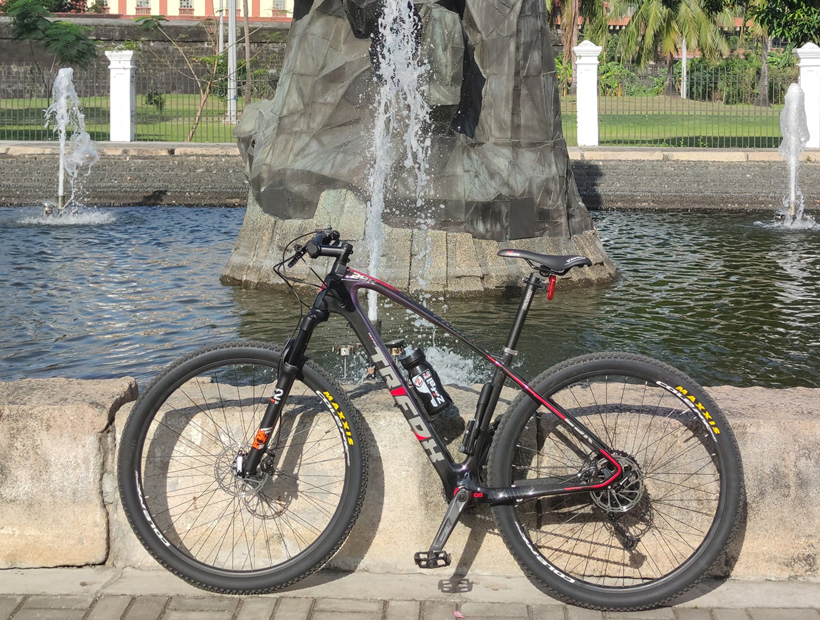
If you're looking to elevate your mountain biking game, upgrading to a carbon hardtail frame is a game-changer. Lightweight, responsive, and built to tackle rugged trails, a carbon frame like the Trifox Carbon MTB Hardtail Frame MFM200 offers unmatched performance for riders seeking speed, control, and durability. Here’s why this upgrade should be at the top of your list. 1. Lightweight Performance Carbon fiber's biggest advantage is its strength-to-weight ratio. A carbon hardtail frame shaves off pounds compared to aluminum or steel, making climbs feel effortless and acceleration snappier. The MFM200’s monocoque construction ensures stiffness where it matters—like the bottom bracket and head tube—while maintaining vertical compliance to absorb trail chatter. This translates to faster lap times and less fatigue on long rides. 2. Precision Handling Hardtails thrive on agility, and carbon takes this to the next level. The MFM200’s geometry balances stability and maneuverability, with a slack head angle for confident descents and a short chainstay for tight cornering. Carbon’s natural vibration-damping properties also reduce hand and arm fatigue, letting you stay in control on technical terrain. 3. Durability That Lasts Don't let carbon's lightweight fool you—it's tough. Modern carbon frames, like Trifox’s MFM200, are engineered to withstand impacts and resist corrosion. The high-modulus carbon layup ensures resilience against rock strikes and rough trails, offering longevity that rivals metal frames. Plus, it’s backed by Trifox’s quality craftsmanship, so you're investing in reliability. 4. Customization Freedom Swapping to a new frame lets you build your dream bike. The MFM200 supports modern standards: internal cable routing for a clean look, a tapered head tube for precise steering, and thru-axle dropouts for wheel stiffness. Pair it with your favorite components—whether 29er or 27.5” wheels, 1x or 2x drivetrains—and tailor your setup to your riding style. 5. Future-Proof Value While carbon frames have a higher upfront cost, they're a smart long-term investment. The MFM200's versatility and timeless design mean you won't need another upgrade soon. Plus, shedding weight at the frame (the bike's core) delivers more noticeable gains than swapping pricier components. Ready to transform your ride? The Trifox MFM200 isn't just a frame—it's the foundation for a faster, smoother, and more thrilling mountain biking experience. Visit TrifoxBike to explore how this carbon hardtail can unlock your trail potential.

In a cycling world increasingly dominated by disc brakes, V-brakes might seem like relics of the past. But don't dismiss them just yet—especially when paired with a purpose-built frame like the Trifox X12 Aero Carbon Road Bike Frame. Let's dive into why V-brake frames still hold their ground and how the X12 elevates this classic tech to modern standards. 1. Lightweight Performance for Speed Seekers V-brakes eliminate the heavy rotors, calipers, and hydraulic systems required for disc brakes, slashing overall bike weight. The Trifox X12 capitalizes on this with its featherlight T800 carbon fiber construction, weighing just 1,100g (frame only). Aerodynamic tube shaping further reduces drag, making it ideal for racers and climbers who prioritize grams and watts. 2. Budget-Friendly Builds Without Compromise Disc brake setups demand costly components—hydraulic lines, rotors, and specialized hubs. V-brakes, by contrast, are affordable and widely compatible. The X12’s V-brake design lets you allocate savings toward high-end wheels or groupsets, creating a pro-level ride at a fraction of the cost. 3. Simplicity Meets Reliability No bleeding brakes or rotor alignment headaches here! V-brakes are famously easy to adjust and maintain. The X12's clean cable routing and durable carbon fork ensure crisp, responsive braking with minimal fuss—perfect for riders who value straightforward mechanics and quick roadside fixes. 4. Seamless Compatibility & Versatility V-brakes work flawlessly with quick-release (QR) wheels, making the X12 frame a versatile choice for riders with multiple wheelsets or those upgrading from older bikes. Whether you’re building a nimble race machine or a sleek commuter, this frame adapts to your needs without requiring costly hub upgrades. The Trifox X12: A V-Brake Frame Built for 2025 This $399 marvel isn't just about brakes—it's a holistic upgrade: Aero Optimization: Wind-tunnel-tested tubing cuts through air resistance. Stiffness + Comfort: T800 carbon balances sprint-ready rigidity with long-ride compliance. Style That Slays: Choose from Red, Blue, Tiffany, or Black to match your vibe. Who Should Ride V-Brakes? Budget Builders: Save for critical components like wheels or drivetrains. Weight-Conscious Riders: Shed grams while retaining reliable stopping power. Fair-Weather Racers: V-brakes excel in dry conditions and are easier to maintain. While disc brakes dominate muddy trails and wet climates, V-brakes remain a smart choice for road cyclists focused on weight, cost, and simplicity. The Trifox X12 proves that V-brake frames can still deliver cutting-edge performance—especially when paired with advanced carbon engineering.
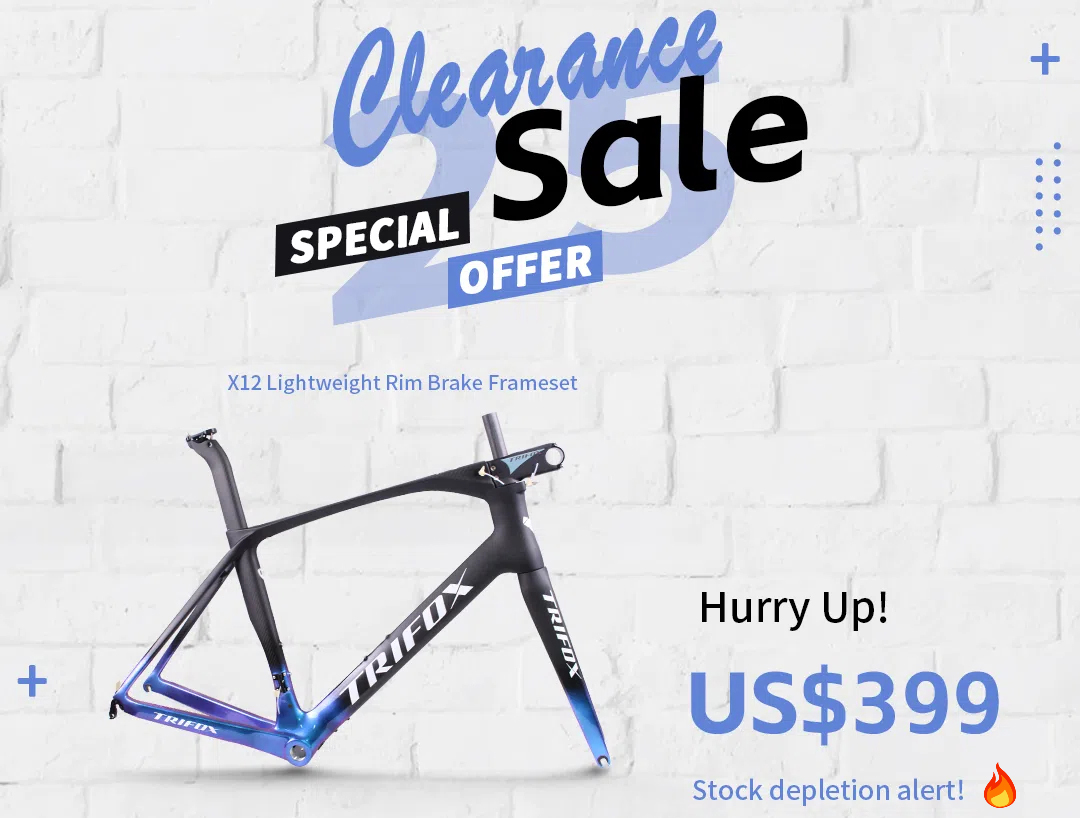
Calling all road cyclists and budget-savvy enthusiasts! Trifox Bike is shaking up the cycling world with an unmissable sale: high-performance carbon road bike frames starting at just $399. Whether you’re building a custom rig or upgrading an existing setup, these premium frames deliver pro-level engineering at a fraction of the cost. Let’s dive into the deals! Elite Carbon Road Frame X12 – Only $399 The X12 Aero Carbon Road Frame is a speed demon’s dream, blending aerodynamic shaping with ultra-lightweight carbon fiber construction. Perfect for racers and endurance riders, its V-brake compatibility and stiffness-to-weight ratio ensure razor-sharp handling. Available in bold Red, Blue, Tiffany, and Black, this frame turns heads while slicing through wind resistance. Disc-Brake Ready X10 Frame – $399 Prefer disc brakes? The X10 Carbon Road Frame is your answer. Built for all-weather confidence, this model features thru-axle compatibility, vibration-dampening layup, and a sleek design optimized for modern components. Choose from Red, Blue, Tiffany, or Black to match your style. Whether you’re climbing steep grades or descending at speed, the X10 delivers uncompromising stability. X8QR: High-Performance Carbon Fiber – $399 Don't overlook the X8QR Carbon Road Frame, a hidden gem in this sale. Its Quick Release (QR) compatibility makes it ideal for riders seeking versatility, while the aero tube profiles and race-ready geometry ensure aggressive efficiency. Available in the same vibrant colors, this frame proves premium performance doesn’t have to cost a fortune. Why Choose Trifox Carbon Frames? Proven Quality: Each frame is crafted using T800 carbon fiber for optimal strength and weight savings. Customization Freedom: Compatible with both mechanical and electronic groupsets. Act Fast – Limited Stock Alert!At $399, these frames are priced to disappear. Whether you’re chasing PRs, building a project bike, or craving an upgrade, this sale is your ticket to premium performance on a budget. Don’t wait—colors and sizes are selling out fast!

When shopping for a mountain bike, weight plays a crucial role in performance. A lighter bike can climb faster, accelerate quicker, and feel more nimble on technical trails. But what exactly qualifies as “lightweight” in the world of mountain biking? Let's break it down. Mountain bikes vary in weight based on their design. A typical hardtail (no rear suspension) ranges from 28–32 pounds (12.7–14.5 kg), while full-suspension models often weigh 30–35 pounds (13.6–15.9 kg). For a bike to be considered lightweight, aim for: - Hardtail: Under 25 pounds (11.3 kg) - Full-suspension: Under 28 pounds (12.7 kg) Achieving these numbers requires premium materials and components. For example, carbon fiber frames, like those used in the Trifox SDY20 Mountain Bike, shave significant weight while maintaining strength. High-end drivetrains (e.g., Shimano XT), tubeless wheels, and minimalist cockpits also contribute to a lighter build. Factors Affecting Weight 1. Frame Material: Carbon fiber is the gold standard for lightweight durability. Aluminum frames are heavier but more affordable. 2. Components: Wheelsets, suspension forks, and drivetrains impact weight. Look for carbon rims and air-sprung shocks. 3. Accessories: Dropper posts and cushioned grips add grams—opt for pared-down versions if weight is a priority. The Trifox SDY20: A Lightweight Contender The Trifox SDY20 exemplifies lightweight design. Its full-carbon frame weighs just 1.2 kg (2.65 lbs), paired with a carbon seatpost and handlebar. Combined with a 1x12 drivetrain and tubeless-ready wheels, the SDY20 hits the scales at roughly 24 pounds (10.9 kg), making it a top choice for riders seeking agility without sacrificing trail capability. Is Lighter Always Better? Not necessarily. Ultra-light bikes can compromise durability or comfort. The key is balancing weight with your riding style. Cross-country racers might prioritize shedding grams, while enduro riders could favor robustness. The SDY20 strikes this balance, offering a responsive ride for technical climbs and descents. A lightweight mountain bike enhances performance but requires strategic investments. If you’re chasing speed and efficiency, prioritize carbon frames and high-end components. Check out the Trifox SDY20 for a blend of featherweight design and trail-ready durability—your next uphill PR might depend on it.
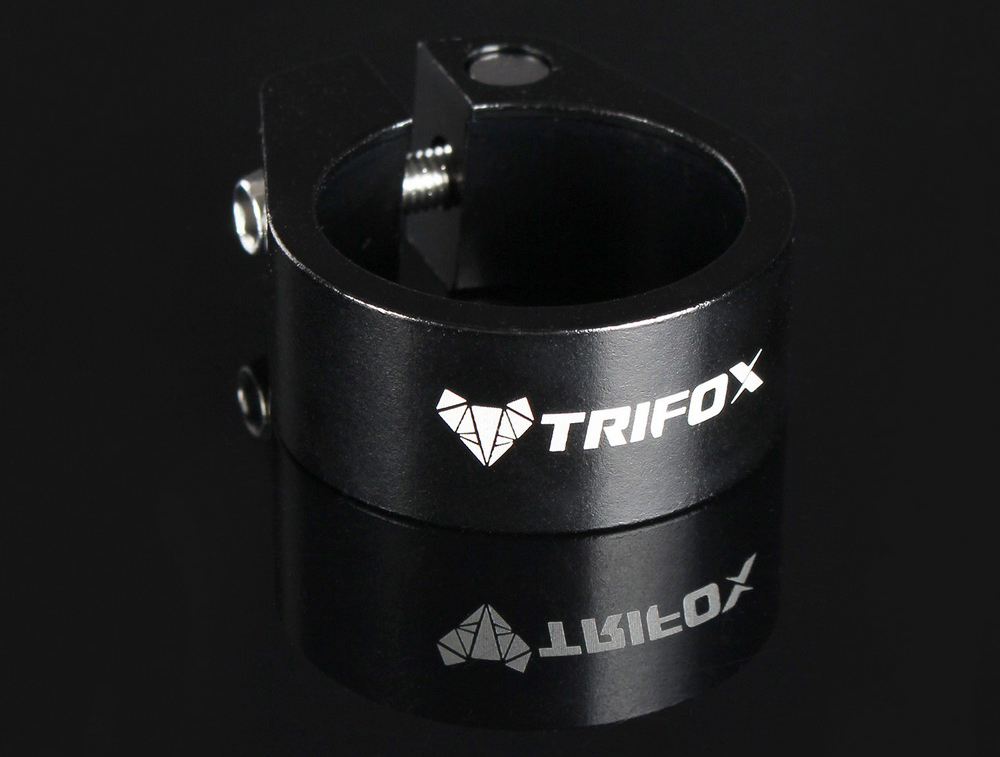
When customizing your bike, even small components like seatpost clamps matter. Two common designs—G-clamps and F-clamps—often confuse riders. Let’s break down their differences, uses. G-Clamp (Collar Clamp) Design: Resembles a circular band (like a “G” shape) that wraps around the seat tube. It typically uses a single bolt for tightening. Function: Simple and lightweight, ideal for road bikes or minimalist setups. Pros: Sleek aesthetics, easy installation, and affordable. Cons: Limited adjustability; uneven pressure can cause slippage on rough terrain. F-Clamp (Dual-Bolt Clamp) Design: Features a flat, “F”-shaped plate with two bolts for securing the seatpost. Function: Distributes pressure evenly across the seat tube, reducing slippage. Common on MTBs or performance bikes. Pros: Enhanced stability, better for aggressive riding, and precise tension control. Cons: Slightly heavier and bulkier than G-clamps. Why Choose Trifoxbike’s Alloy Seatpost Clamp? Trifoxbike's Alloy Seatpost Clamp bridges the gap between designs. Crafted from lightweight aluminum, it combines the simplicity of a collar clamp with the reliability of dual-bolt systems. Key features: Durable Construction: Resists corrosion and withstands trail vibrations. Sleek Profile: Fits seamlessly with modern bike aesthetics. Secure Grip: Prevents seatpost slippage during climbs or descents. Which Should You Use? G-Clamp: Choose for road bikes, commuters, or casual rides where weight savings and simplicity matter. F-Clamp: Opt for mountain biking, gravel grinding, or heavy-duty use where stability is critical. Final Tips Always match the clamp diameter to your seat tube (common sizes: 28.6mm, 31.8mm, 34.9mm). Grease bolt threads to prevent seizing. Check torque specs to avoid overtightening. Whether you prioritize weight or durability, understanding clamp designs ensures a secure, comfortable ride. For a reliable upgrade, Trifoxbike’s Alloy Seatpost Clamp delivers performance without the bulk—proving that even small parts can make a big difference.

















